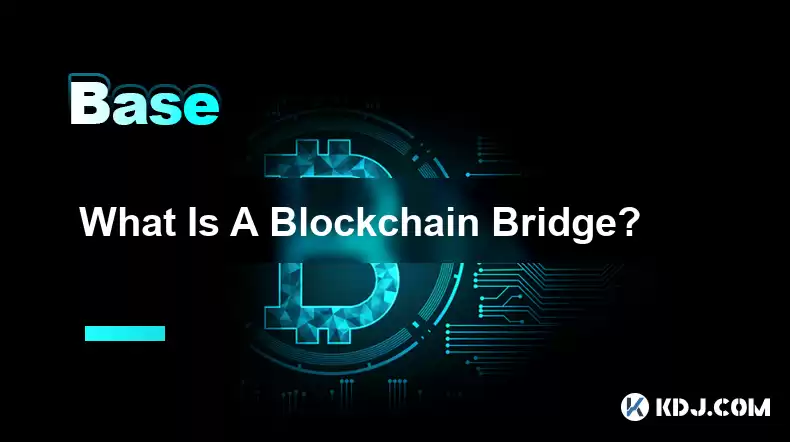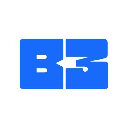-
 Bitcoin
Bitcoin $115000
0.12% -
 Ethereum
Ethereum $3701
4.50% -
 XRP
XRP $3.081
2.99% -
 Tether USDt
Tether USDt $0.0000
-0.01% -
 BNB
BNB $767.9
1.45% -
 Solana
Solana $169.5
3.13% -
 USDC
USDC $0.9999
0.01% -
 Dogecoin
Dogecoin $0.2106
4.30% -
 TRON
TRON $0.3334
1.62% -
 Cardano
Cardano $0.7564
2.54% -
 Stellar
Stellar $0.4165
0.76% -
 Hyperliquid
Hyperliquid $38.75
0.25% -
 Sui
Sui $3.593
3.00% -
 Chainlink
Chainlink $17.08
3.59% -
 Bitcoin Cash
Bitcoin Cash $573.6
4.35% -
 Hedera
Hedera $0.2508
-0.84% -
 Avalanche
Avalanche $23.07
6.46% -
 Ethena USDe
Ethena USDe $1.001
-0.02% -
 Litecoin
Litecoin $120.8
8.17% -
 UNUS SED LEO
UNUS SED LEO $8.943
-0.32% -
 Toncoin
Toncoin $3.400
-5.60% -
 Shiba Inu
Shiba Inu $0.00001255
1.54% -
 Uniswap
Uniswap $9.908
6.32% -
 Polkadot
Polkadot $3.718
2.10% -
 Monero
Monero $303.0
-0.74% -
 Dai
Dai $0.9999
-0.02% -
 Bitget Token
Bitget Token $4.392
0.91% -
 Cronos
Cronos $0.1403
6.31% -
 Pepe
Pepe $0.00001076
1.13% -
 Aave
Aave $267.2
1.80%
What Is A Blockchain Bridge?
Blockchain bridges enable the transfer of assets and data across disparate networks, fostering interoperability and innovation within the blockchain ecosystem.
Dec 13, 2024 at 04:13 pm

What Is A Blockchain Bridge?
A blockchain bridge is a tool that enables the transfer of assets or data between two different blockchains. This allows for the seamless exchange of value and information across disparate networks, opening up new possibilities for interoperability and innovation within the blockchain ecosystem.
How Do Blockchain Bridges Work?
The functionality of a blockchain bridge typically involves the following steps:
1. Lock and Mint
When transferring assets from one blockchain to another, the bridge locks the original asset on the source chain. This prevents double-spending and ensures the integrity of the asset transfer. Simultaneously, the bridge mints a new asset on the destination chain, representing the value of the locked asset.
2. Verification and Validation
Before the minted asset on the destination chain can be used, it undergoes a verification and validation process. This ensures that the lock on the source chain is valid and that the asset has not been compromised during the transfer.
3. Cross-Chain Transfer
Once the asset has been verified and validated, it can be transferred to the destination chain. This is achieved through a combination of mechanisms that allow for the movement of value and information between the two networks.
4. Unlock and Burn
When the asset is successfully transferred to the destination chain, the bridge unlocks the original asset on the source chain. This releases the asset for use on the source chain, completing the transfer process. Concurrently, the bridge burns the minted asset on the destination chain, removing it from circulation and maintaining the balance between the two chains.
Types of Blockchain Bridges
There are various types of blockchain bridges, each with its own unique characteristics and trade-offs:
1. Centralized Bridges
Centralized bridges rely on a trusted third party to manage the locking and minting process. This approach simplifies the bridge's operation but introduces potential risks associated with centralization, such as the risk of censorship or malicious behavior by the bridge operator.
2. Decentralized Bridges
Decentralized bridges eliminate the need for a central authority by distributing the bridge's functionality across a network of validators. This enhances security and reduces the risk of centralization but can introduce complexities in terms of consensus mechanisms and governance.
3. Custodial Bridges
Custodial bridges involve the transfer of assets to a custodian, who is responsible for safeguarding the assets during the bridging process. This approach provides convenience but introduces the risk of loss or compromise if the custodian is compromised.
4. Non-Custodial Bridges
Non-custodial bridges do not require the use of a custodian, instead relying on smart contracts to automate the locking and minting process. This approach enhances security but can be more complex to set up and manage.
Benefits of Blockchain Bridges
The use of blockchain bridges offers several benefits:
1. Interoperability
Blockchain bridges enable the seamless transfer of assets and data between different blockchains, fostering interoperability within the blockchain ecosystem.
2. Value Exchange
Bridges facilitate the exchange of value between blockchains, enabling users to move assets between different networks for various purposes such as trading, lending, or accessing decentralized applications.
3. Cross-Chain Communication
Bridges allow for the transfer of information and messages between blockchains, facilitating communication and data exchange between disparate networks.
4. Extended Functionality
Bridges enhance the functionality of blockchains by connecting them to other networks, allowing users to access a wider range of applications and services.
Challenges of Blockchain Bridges
Despite their benefits, blockchain bridges also face challenges:
1. Security
Bridges introduce new attack vectors as they span multiple blockchains, increasing the potential for exploits and hacks.
2. Complexity
Setting up and managing blockchain bridges can be complex and требует технических знаний, raising barriers to adoption.
3. Scalability
Bridges may struggle to keep up with the transaction volume, especially during periods of high network congestion, leading to delays and failed transactions.
Disclaimer:info@kdj.com
The information provided is not trading advice. kdj.com does not assume any responsibility for any investments made based on the information provided in this article. Cryptocurrencies are highly volatile and it is highly recommended that you invest with caution after thorough research!
If you believe that the content used on this website infringes your copyright, please contact us immediately (info@kdj.com) and we will delete it promptly.
- Velo Universe, DEX, and DeFi Security: Navigating the Future of Decentralized Trading
- 2025-08-05 09:25:13
- Bitget Wallet Revolutionizes Solana with Gas-Free Transactions: A New Era for DeFi
- 2025-08-05 09:25:13
- Cryptocurrency, Altcoins, and Profit Potential: Navigating the Wild West
- 2025-08-04 14:50:11
- Blue Gold & Crypto: Investing Disruption in Precious Metals
- 2025-08-04 14:30:11
- Japan, Metaplanet, and Bitcoin Acquisition: A New Era of Corporate Treasury?
- 2025-08-04 14:30:11
- Coinbase's Buy Rating & Bitcoin's Bold Future: A Canaccord Genuity Perspective
- 2025-08-04 14:50:11
Related knowledge

What is the difference between CeFi and DeFi?
Jul 22,2025 at 12:28am
Understanding CeFi and DeFiIn the world of cryptocurrency, CeFi (Centralized Finance) and DeFi (Decentralized Finance) represent two distinct financia...

How to qualify for potential crypto airdrops?
Jul 23,2025 at 06:49am
Understanding What Crypto Airdrops AreCrypto airdrops refer to the distribution of free tokens or coins to a large number of wallet addresses, often u...

What is a crypto "airdrop farmer"?
Jul 24,2025 at 10:22pm
Understanding the Role of a Crypto 'Airdrop Farmer'A crypto 'airdrop farmer' refers to an individual who actively participates in cryptocurrency airdr...

What is the difference between a sidechain and a Layer 2?
Jul 20,2025 at 11:35pm
Understanding the Concept of SidechainsA sidechain is a separate blockchain that runs parallel to the main blockchain, typically the mainnet of a cryp...

What is the Inter-Blockchain Communication Protocol (IBC)?
Jul 19,2025 at 10:43am
Understanding the Inter-Blockchain Communication Protocol (IBC)The Inter-Blockchain Communication Protocol (IBC) is a cross-chain communication protoc...

How does sharding improve scalability?
Jul 20,2025 at 01:21am
Understanding Sharding in BlockchainSharding is a database partitioning technique that is increasingly being adopted in blockchain technology to enhan...

What is the difference between CeFi and DeFi?
Jul 22,2025 at 12:28am
Understanding CeFi and DeFiIn the world of cryptocurrency, CeFi (Centralized Finance) and DeFi (Decentralized Finance) represent two distinct financia...

How to qualify for potential crypto airdrops?
Jul 23,2025 at 06:49am
Understanding What Crypto Airdrops AreCrypto airdrops refer to the distribution of free tokens or coins to a large number of wallet addresses, often u...

What is a crypto "airdrop farmer"?
Jul 24,2025 at 10:22pm
Understanding the Role of a Crypto 'Airdrop Farmer'A crypto 'airdrop farmer' refers to an individual who actively participates in cryptocurrency airdr...

What is the difference between a sidechain and a Layer 2?
Jul 20,2025 at 11:35pm
Understanding the Concept of SidechainsA sidechain is a separate blockchain that runs parallel to the main blockchain, typically the mainnet of a cryp...

What is the Inter-Blockchain Communication Protocol (IBC)?
Jul 19,2025 at 10:43am
Understanding the Inter-Blockchain Communication Protocol (IBC)The Inter-Blockchain Communication Protocol (IBC) is a cross-chain communication protoc...

How does sharding improve scalability?
Jul 20,2025 at 01:21am
Understanding Sharding in BlockchainSharding is a database partitioning technique that is increasingly being adopted in blockchain technology to enhan...
See all articles

























































































